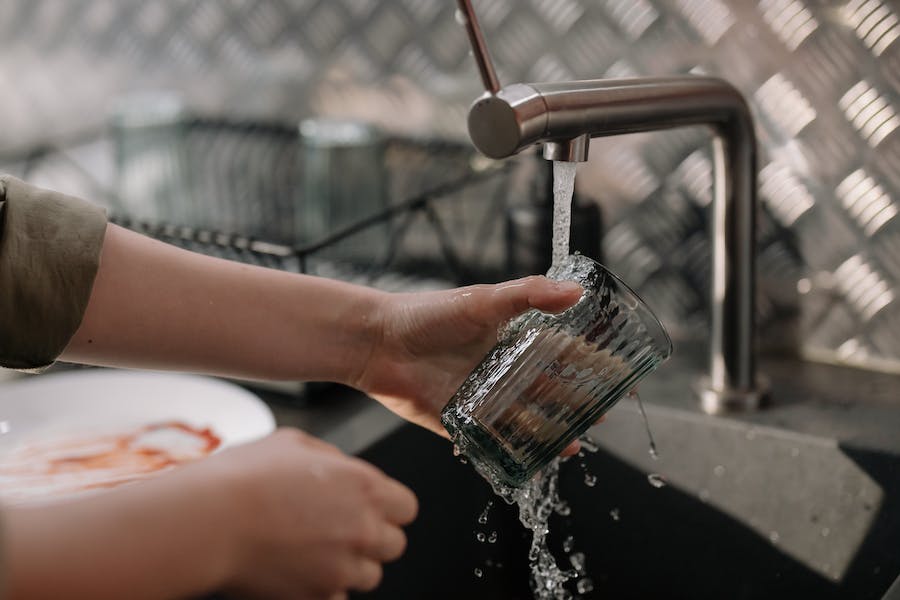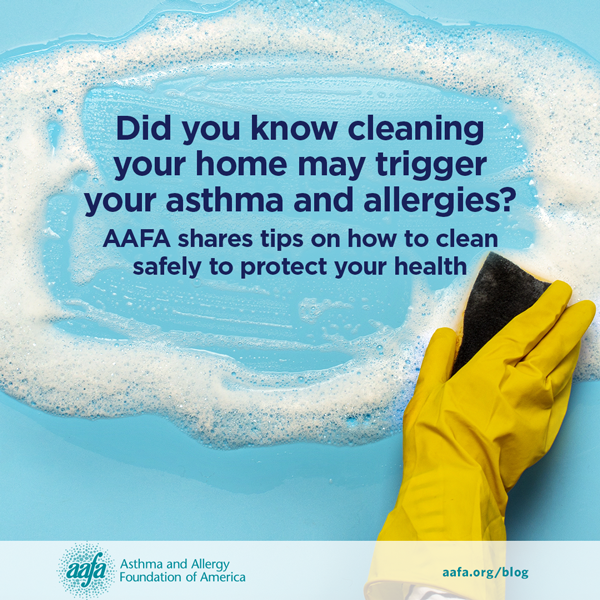
Washing dishes with bleach can be safe if used properly and diluted. It is essential to rinse dishes thoroughly after bleaching.
Ensuring the safety and cleanliness of your kitchen utensils is paramount for health and hygiene. One common household product that often comes to the rescue for tough stains and disinfection is bleach. While it’s recognized for its powerful sanitizing properties, using bleach on dishes requires certain precautions.
It’s not just about making your plates sparkle but also about safeguarding your family from germs and potential chemical residue. Our comprehensive guide delves into the nitty-gritty of using bleach safely for dishwashing, offering peace of mind with every scrub and rinse. Understanding the principles behind proper dilution and application, any home chef can harness the power of bleach without compromising the family’s well-being.

Credit: community.aafa.org
The Chemistry Behind Bleach And Dishwashing
Understanding the use of bleach in dishwashing requires a dive into the science that makes this common household chemical work. In kitchens worldwide, the sight and scent of bleach signify a thorough clean. Let’s unfold the chemistry that intertwines bleach with the dishwashing process.
What Is Bleach?
Bleach is a powerful disinfectant and whitener, widely known for its ability to kill germs and remove stains. The most common form of bleach found in homes is sodium hypochlorite. It contains a sodium ion (Na+) and a hypochlorite ion (OCl-), which acts as the active ingredient in bleach solutions.
How Bleach Reacts With Food Residues And Grime
When introduced to food residues and grime on dishes, bleach undergoes a chemical reaction. The hypochlorite ions break down proteins and fats in the residue. This process, called oxidation, dismantles the molecular structure of the food particles and stains, effectively disintegrating them. As a result, the dishes come out looking cleaner.
- Oxidation helps in breaking down and removing stains.
- Bleach reacts with water to form hypochlorous acid, a potent disinfectant.
- Used correctly, diluted bleach can safely disinfect dishes and cutlery.
Health Implications Of Using Bleach
Many people reach for bleach to clean their dishes. It kills germs and whitens surfaces. But, is it safe? Let’s look at how bleach affects health when used for dishwashing.
Potential Risks To Skin And Respiratory Health
Bleach is a strong chemical. It can cause harm when it touches skin or is inhaled. Protecting skin and lungs is key. Here are the risks:
- Irritation: Bleach can irritate the skin, causing redness and burns.
- Allergic Reactions: Some may develop rashes or more severe skin reactions.
- Respiratory Issues: Breathing in fumes leads to coughing and shortness of breath.
Long-term Effects Of Bleach Exposure
Regular use of bleach poses long-term risks. Here they are tabled:
| Exposure Type | Possible Long-Term Effect |
|---|---|
| Skin Contact | Chronic irritant contact dermatitis |
| Inhalation | Increase in asthma and other respiratory problems |
| Overall Exposure | Risk of more severe health conditions over time |
It’s clear that using bleach without proper care is dangerous. Safety measures are a must to minimize risks. Use gloves and ventilate the area well. Keep these tips in mind to avoid health issues.
Bleach On Dishes: The Dos And Don’ts
Using bleach to clean dishes can be a strong solution to eradicate germs. Yet, it’s crucial to use it correctly. Knowing the right ways to apply bleach ensures safety for everyone at home. Let’s explore the dos and don’ts to keep in mind.
Proper Dilution Ratios For Safety
Mixing bleach safely is key. Too much can be harmful, while too little might not clean well. Here’s how to get it right:
- Use cool water, as hot can make bleach less effective.
- A standard ratio is one teaspoon of bleach per quart of water.
- For larger batches, mix four teaspoons of bleach with a gallon of water.
Always mix in a well-ventilated area. Wear gloves to protect your skin.
Materials And Surfaces To Avoid With Bleach
Bleach is powerful, but not for all materials. Knowing what to skip prevents damage.
| Material | Why to Avoid |
|---|---|
| Aluminum | Can corrode or discolor |
| Wooden ware | May warp or crack |
| Non-stainless steel | Risk of rusting |
| Colored fabric | Colors may fade or bleed |
Prevent accidents by keeping bleach away from these items. Check labels and keep bleach stored safely.
Alternatives To Bleach For Safe Dishwashing
While bleach is a powerful disinfectant, safety concerns might steer you towards other options for dishwashing. Skin irritation and the potential for creating harmful fumes are downsides to bleach. But fear not, as there are numerous safer, effective alternatives to keep your dishes clean and your health intact.
Natural Dishwashing Solutions
Natural Dishwashing Solutions
Turn to nature for some kitchen hygiene inspiration. Natural dishwashing solutions protect your skin and the environment.
- Vinegar: An all-natural disinfectant, vinegar cuts through grease and leaves dishes sparkling clean. Mix equal parts of vinegar and water for a homemade rinse aid.
- Baking Soda: Baking soda scrubs away tough stains without scratching your dishes. Sprinkle it on a damp sponge and scrub directly.
- Lemon Juice: With its high acid content, lemon juice not only provides a fresh scent but also has antibacterial properties.
Try combining these substances for a DIY dishwashing paste: mix a tablespoon of baking soda with a teaspoon of liquid soap and a few drops of lemon juice.
Commercial Non-Bleach Disinfectants
Commercial Non-bleach Disinfectants
If homemade mixtures aren’t your style, plenty of commercial non-bleach disinfectants can make your kitchen routine safer and just as clean.
| Brand | Main Ingredient | Eco-Friendly |
|---|---|---|
| Seventh Generation | Thymol (Thyme Oil) | Yes |
| Method | Citric Acid | Yes |
| Ecover | Plant-Based and Mineral Ingredients | Yes |
| Green Works | Naturally Derived | Yes |
Select products with a clear ingredient list and a certification such as EPA Safer Choice or Green Seal. These indicate the product’s safety for both users and the planet.
End of the content
Expert Opinions On Bleach In The Kitchen
When it comes to kitchen hygiene, the use of bleach is a hot topic. Bleach is known for its strong disinfecting power. But is it safe for washing dishes? Let’s dive into what the experts have to say on this matter.
Guidelines From Health Organizations
Health organizations set safety standards for bleach. They consider its cleaning benefits. Yet, they stress caution for your safety.
- Dilute bleach properly – too strong can be harmful.
- Wear gloves – bleach can irritate your skin.
- Ventilate the area – inhaling fumes can hurt your lungs.
- Rinse dishes well after – no bleach should be left on them.
Insights From Professional Cleaners
Professional cleaners use bleach daily. They know how to use it right.
“Bleach is effective against germs,” one cleaner says. “But not needed for every wash.”
| Use Case | Professional’s Advice |
|---|---|
| Daily Washing | Mild soap is better and safer. |
| Sanitizing | Use bleach sparingly and follow safety tips. |
Making An Informed Decision On Household Cleaners
Making an informed decision on household cleaners is crucial to keeping your home safe and hygienic. With so many products on offer, understanding the benefits and risks of each is key.
Balancing Efficacy With Safety
When it comes to household cleaning, efficacy and safety must go hand in hand. While bleach is a powerful disinfectant, safety should never be compromised. To keep both top of mind, consider the following tips:
- Use the correct dilution: Always follow the instructions on the bleach bottle to dilute it properly.
- Good ventilation: Open windows or use fans to ensure fresh air when using bleach.
- Protect your skin: Wear gloves to protect your hands from irritation.
- Avoid mixing: Never mix bleach with ammonia or other cleaners.
Educating Yourself On Household Chemicals
Knowledge is power, especially when dealing with chemicals in your home. Proper education on household chemicals ensures their safe use. Keep these points in mind:
- Read labels carefully before use.
- Research the active ingredients of your cleaners.
- Understand the potential hazards associated with each product.
By staying informed, you can make choices that protect your family’s health while maintaining a spotless home.
Frequently Asked Questions On Is Washing Dishes With Bleach Safe
Is Bleach Safe To Use On Dishes?
Yes, bleach can be used on dishes if properly diluted. Rinse dishes thoroughly after disinfecting to ensure no bleach residue remains. Always follow the label instructions for safe use.
Do Restaurants Use Bleach To Sanitize Dishes?
Yes, restaurants often use diluted bleach solutions to sanitize dishes, following health department guidelines for safety and cleanliness.
Is Bleach Residue Harmful?
Bleach residue can be harmful as it may irritate skin, eyes, and respiratory systems if not properly rinsed. Always ensure surfaces are thoroughly cleaned of bleach after use.
Do You Need To Rinse Bleach Off?
Yes, it’s important to rinse off bleach after cleaning to remove any residue and prevent damage to surfaces or skin irritation. Always ventilate the area and follow the bleach manufacturer’s instructions for safe use and rinsing practices.
Conclusion
Understanding the safety of bleach in dishwashing requires attention to dilution and material compatibility. Properly diluted bleach can sanitize effectively, but usage on certain materials should be avoided. Always prioritize safety guidelines for a risk-free cleaning experience. Remember, when in doubt, seek alternative disinfectants.




















